The Mastercard MATCH List Criteria
December 18, 2023
Help! My Merchant Account Has Been Terminated!
February 29, 2024How Can I Get Early MATCH List Removal?
Have you found yourself on the MATCH List and want to be removed? Of course, you do: Waiting for the five-year penalty period to be over is nearly impossible for any business to survive. Becoming a high-risk merchant will mean high fees, long contracts, and less profit for you while running your business. Luckily, there are ways you can get removed from the MATCH List early. That’s right: You do not have to wait the five-year penalty period out and risk losing your business. Keep reading to learn more about how you can get early removal from the MATCH List and get back to business as usual.
Why Am I On The MATCH List?
The Mastercard Alert To Control High-risk Merchants List (MATCH List) lets an acquiring partner look up whether another acquiring partner has terminated a merchant in the past and the reason for said termination, to help with an onboarding decision. Acquirers and Acquiring Third Party Processors will add terminated merchants to MATCH to alert other acquirers in the ecosystem of the potential risks associated with the merchant.
How it works:
- Step 1: Within five days of the decision to terminate a merchant that meets one of the MATCH reasons codes, the acquirer submits an additional record to the MATCH API that includes information on the merchant and associated principal owners, and the applicable reason code
- Step 2: The record is added to MATCH and made available to all other acquirers in real-time
- Step 3: MATCH returns a confirmation to the acquirer that the merchant was successfully added and provides a MATCH Reference Number
There are 13 reason codes that can be used to add a merchant to the MATCH List. Once added, acquiring partners have the ability to do the following:
- Add merchants who have been terminated for specific reasons to MATCH
- Designate regions/countries and use multiple fields to determine possible matches
- Add and search for information about up to five principal owners per merchant inquiry and addition
- Inquire about a merchant to find out if they have been previously added to MATCH
- Receive retroactive alerts if a merchant you previously inquired about is added to MATCH within 360 days of the initial inquiry
Most Common MATCH List Violations
While there are thirteen reason code violations that can get you added to the MATCH List, there are two very common violations that take the majority, which include PCI Data Security Standard Non-Compliance and excessive chargebacks.
PCI Data Security Standard Noncompliance Violation
According to Tokenex, the PCI DSS consists of 12 requirements or demands. Each of them is made up of several more specific, related controls for a grand total of more than 300 security checks.
For example, PCI Requirement 1 covers the construction and maintenance of a secure network infrastructure. Meeting this overall requirement entails confirming the presence of properly secured firewalls, routers, and other applications to prevent unauthorized access to the cardholder data environment.
The 12 requirements of the PCI DSS fall under six overarching categories. These six categories provide an overview of the security controls required for PCI compliance.
The goal is to ensure that your customer’s data is never part of a breach. Protecting customers’ data is very important to Mastercard. However, with the constant innovation and new tricks up hackers’ sleeves, it can be difficult to ensure your business is one hundred percent protected unless you follow the PCI Requirements.
Excessive Chargeback Violation
Chargebacks can be a normal part of running a business, as mistakes can happen. That is why businesses are allowed a 1% chargeback rate. However, once your chargeback rate starts creeping up to the 2% area and you consistently have issues, this can quickly land you on The MATCH List for an excessive chargeback violation.
The most common reasons for filing a chargeback include:
- Not receiving goods or services in a timely manner
- Not receiving goods or services at all
- Not receiving goods or services in a timely manner
- Poor customer service
- Difficult return policy
- Unidentifiable business name in transaction history
As long as you run your business as advertised, get your goods or services out in a timely manner as promised, give good customer service, have an easy-to-find-and-follow return policy, and have your business name clearly stated in the bank transaction, you should have no issues.
What Happens Once I Am On The MATCH List?
Once on the MATCH List, you must wait five years before you are no longer considered a high-risk merchant. After five years, you can go back to business as usual, as you will have aged off the list and cannot be found on it again. The MATCH List is very comprehensive, and it has been designed so that you cannot find a loophole. The information on the MATCH List includes:
- Your business name in all its forms
- Names of the business owners
- Names of associates
- Business address and contact details
- Addresses, phone numbers, and other contact information
How Do I Get Off The MATCH List?
Once you are placed on the MATCH List, it can be an overwhelming feeling knowing that you will be considered a high-risk merchant and have to wait five years to be able to run your business normally again with a merchant account. Luckily, there are ways you can get off the MATCH List early and save your business, including allowing the Law Offices of Theodore Monroe to work as your advocate for efficient removal as quickly as possible.
Wait The 5 Year Penalty Period
Your first option for getting off the MATCH List is waiting out the five-year penalty period. During this time, it will be incredibly difficult for you to find a bank willing to work with you. There are some options for being able to continue running your business, including:
- Becoming cash-only. You can turn your business into a cash-only business for the time being. However, this can be incredibly difficult for most businesses to achieve. Most, if not all, people want to have a paper trail for their expenses and according to Forbes, 84% of people would rather use a credit or debit card over using cash.
- Finding a high-risk processor. There are some payment processors who work with high-risk businesses. Some businesses are inherently high-risk, such as adult entertainment, subscription services, bail bondsmen, smoke shops, and more. You may be able to find a home with one of these high-risk processors; however, you will find yourself locked in a lengthy contract and paying exorbitant fees.
Attempt Early Removal Yourself
In some cases, you can attempt early removal yourself. If you have an otherwise good relationship with your bank or processor and are able to prove that you are in good standing, there is a small chance you can get removed early—although it is very rare.
Simply call your bank and ask them why you were placed on the MATCH List. While they are not obligated to speak with you about it (which makes this process difficult), you may get lucky and speak with someone who is willing to work with you.
For example, some merchants get placed on the list for something very small, such as failing to pay an early termination fee. You may also be able to prove your PCI DSS compliance or that your chargeback rate is not above 2%.
Successful Early Removal with TFM Law
Your best bet for getting off of the MATCH List early is by using TMF Law as your advocate. Merchant law can be daunting waters, but we are very successful at getting our clients off the list in a very timely manner. In fact, last year, the firm got 100% of the people who came to us off the MATCH list.
We focus on litigation and counseling in the areas of payments, credit card processing, e-commerce, direct response marketing, and Federal Trade Commission enforcement.
Theodore F. Monroe, Founder of TFM Law, has successfully:
- Represented merchants recovering funds from processors
- Structured processing relationships to comply with Card Brand requirements
- Drafted and negotiated contracts involving payment facilitators and ISOs
- Represented continuity merchants in compliance and litigation issues
- Fought for numerous companies in suits brought by the Federal Trade Commission and obtained excellent results for firms in the digital products, loan modification, government grant, and nutraceuticals industries
Before opening his firm, Mr. Monroe practiced law with Crosby, Heafey, Roach & May (now Reed Smith LLP) and Lewis, D’Amato, Brisbois & Bisgaard (now Lewis, Brisbois, Bisgaard & Smith), where he defended numerous accounting and law firms in professional liability actions, and insurance carriers in bad faith actions.
Before becoming a lawyer, Mr. Monroe worked as a forensic accountant at Coopers & Lybrand, which provided him a background in forensic accounting and financial analysis that is unique among litigators in Los Angeles. Mr. Monroe studied at Duke University Law School, achieved a BS with Honors, Accounting, University of Kentucky, and is a member of the California State Bar and the Kentucky State Bar.
For more information and to get early MATCH List removal now, visit us at howtogetoffmatch.com.




